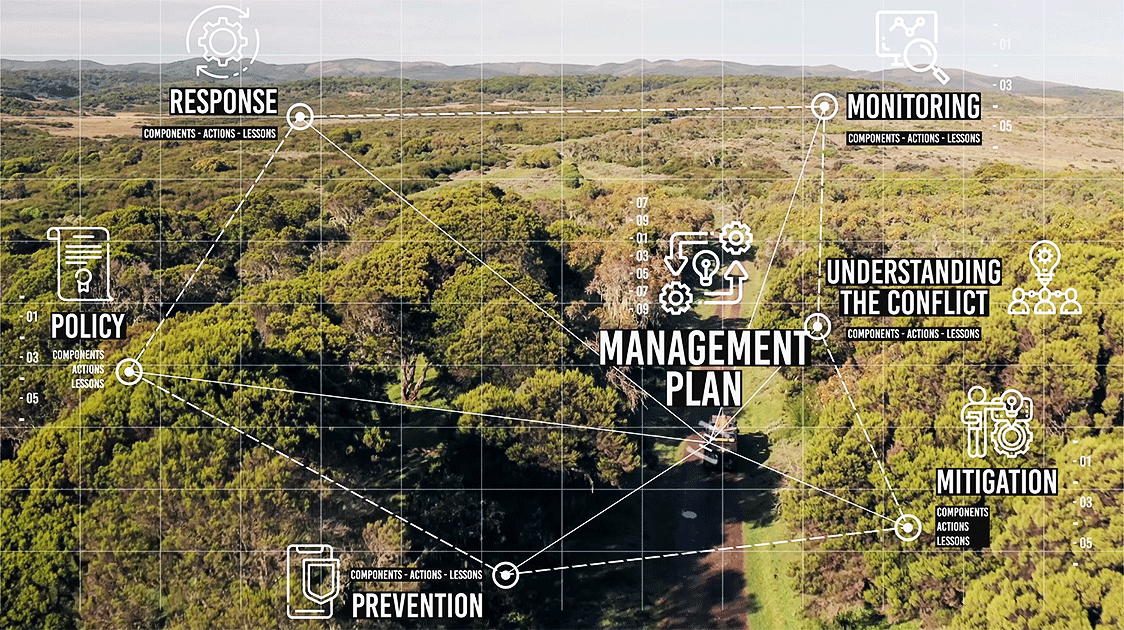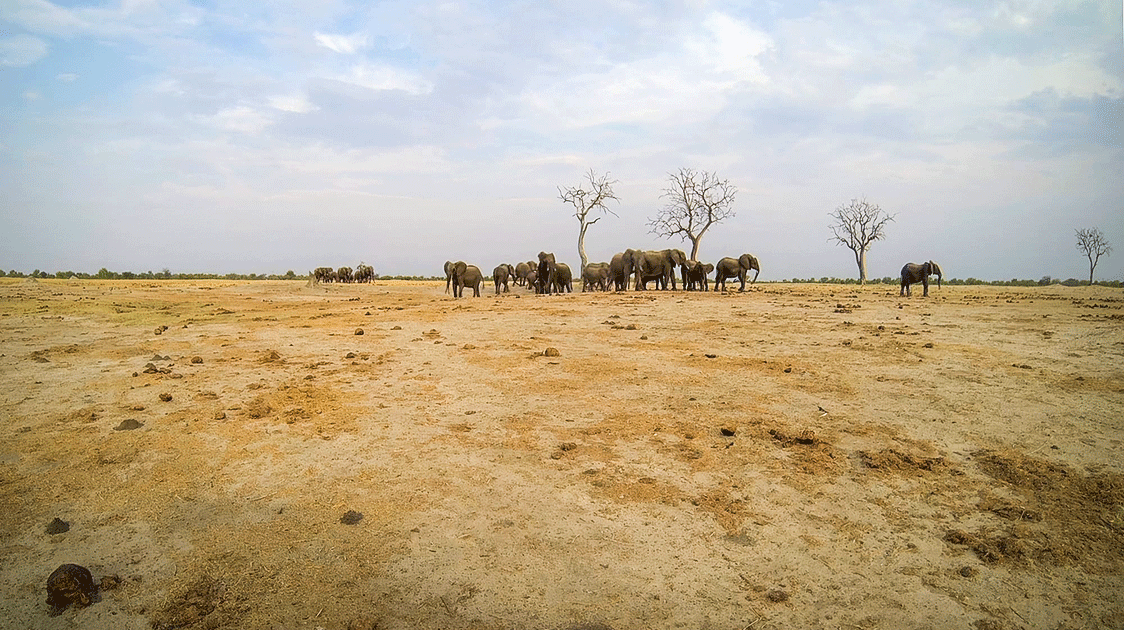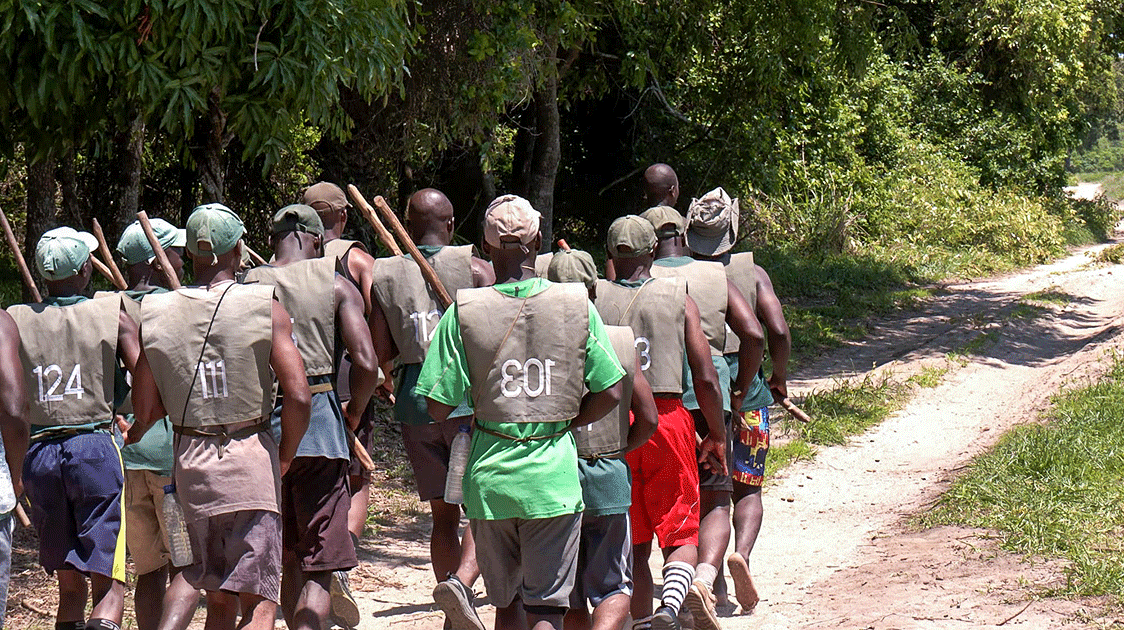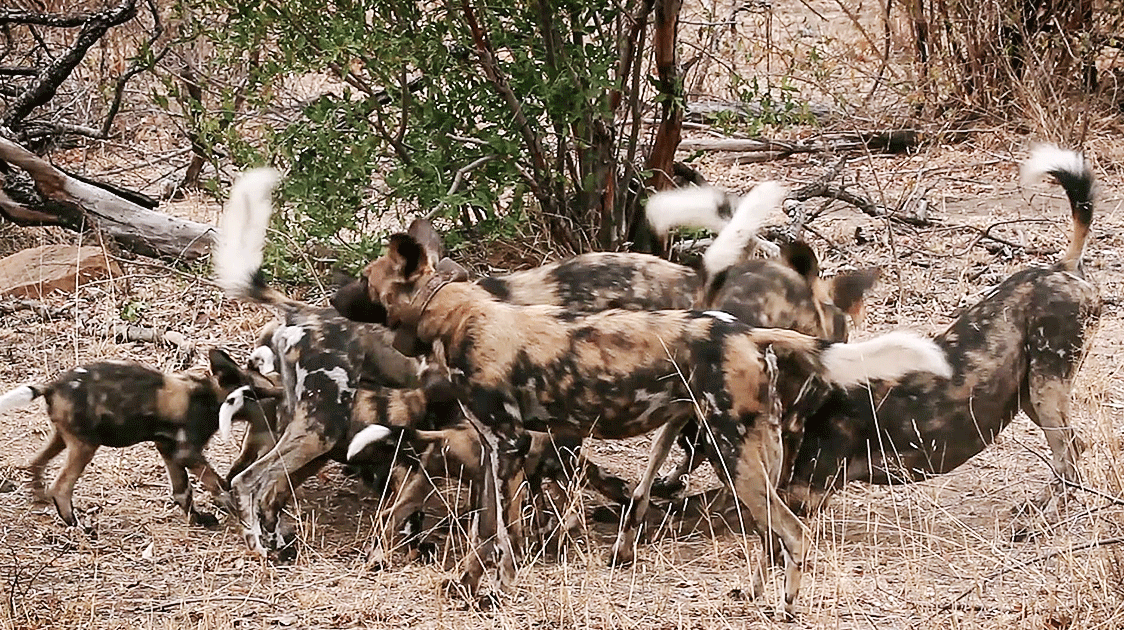The “SAFE” Approach to Human-Wildlife Conflict

Human-wildlife conflict can be defined as any interaction between humans and wildlife that negatively impacts human social, economic or cultural life on the conservation of wildlife populations or the environment.
Current strategies revolve around "resolving "and "mitigating" conflict.
This approach is either too simplistic or short-sighted or addresses only a part of the problem and specific times of a conflict event.
The SAFE Approach to Human-wildlife conflict is results-focused and delivered through five Strategic Outcomes: safe person, safe assets, safe wildlife, safe habitat, and effective monitoring.
The SAFE approach ensures that:
- All six elements of Human-wildlife conflict are integrated.
- The Strategic Outcomes act as minimum standards for Human-wildlife conflict management and
- If each of the five Strategic Outcomes is met, then contact between humans and wildlife is minimized, and both can be safe in the event of contact within acceptable limits of tolerance.
A SAFE approach to Human-wildlife conflict provides:
- A holistic view of the conflict in its entirety.
- Is inclusive in that it encompasses all the interactions between the people, their land, their livelihoods, decision-makers, commercial and government interests, and wildlife;
- and is forgiving as it accommodates human error and the "wildness" of the species involved and that conflict events will never be zero.

The Safe System approach has four guiding principles:
- It recognizes that wildlife is wild, and conflict will occur. However, when conflicts arise, the interventions across the system should ensure that the impact of an incident does not exceed the limits of community tolerance and does not result in retaliatory killing.
- It stresses that individuals, communities, leaders, and the public involved in the system's design must accept and share responsibility for its safety. Those who use the system must take responsibility for complying with the rules and constraints of the system.
- It aligns conflict management decisions with broader development plans and processes contributing to economic, human, and environmental goals.
- It guides interventions to meet the minimum standards and long-term goals rather than setting specific targets.




Comments ()